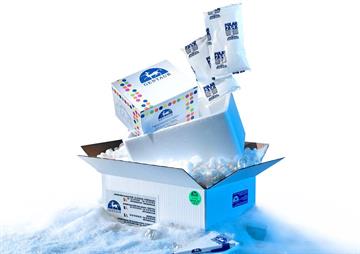Anti-Human BD-2 Antibody

Anti-Human BD-2 Antibody
518.55 EUR
In Stock
quantity
Produktdetaljer
Katalognummer: 209 - 102-P103G
Produktkategori: Företag och industri > Vetenskap och laboratorium
ReliaTechGentaur
Storlek: 100 µg
Related Products
102-P103G
Anti-Human BD-2 Antibody
Defensins (alpha and beta) are cationic peptides with a broad spectrum of antimicrobial activity that comprise an important arm of the innate immune system. The α-defensins are distinguished from the β-defensins by the pairing of their three disulfide bonds. To date, six human β-defensins have been identified; BD-1, BD-2, BD-3, BD-4, BD-5 and BD-6. β-defensins are expressed on some leukocytes and at epithelial surfaces. In addition to their direct antimicrobial activities, they can act as chemoattractants towards immature dendritic cells and memory T cells. The β-defensin proteins are expressed as the C-terminal portion of precursors and are released by proteolytic cleavage of a signal sequence and in some cases, a propeptide sequence. β-defensins contain a six-cysteine motif that forms three intra-molecular disulfide bonds.
518.55 €
102-P219
Anti-Human BD-1 Antibody
Defensins (alpha and beta) are cationic peptides with a broad spectrum of antimicrobial activity that comprise an important arm of the innate immune system. The α-defensins are distinguished from the β-defensins by the pairing of their three disulfide bonds. To date, six human β-defensins have been identified; BD-1, BD-2, BD-3, BD-4, BD-5 and BD-6. β-defensins are expressed on some leukocytes and at epithelial surfaces. In addition to their direct antimicrobial activities, they can act as chemoattractants towards immature dendritic cells and memory T cells. The β-defensin proteins are expressed as the C-terminal portion of precursors and are released by proteolytic cleavage of a signal sequence and in some cases, a propeptide sequence. β-defensins contain a six-cysteine motif that forms three intra-molecular disulfide bonds.
518.55 €
102-P220
Anti-Human BD-3 Antibody
Defensins (alpha and beta) are cationic peptides with a broad spectrum of antimicrobial activity that comprise an important arm of the innate immune system. The α-defensins are distinguished from the β-defensins by the pairing of their three disulfide bonds. To date, six human β-defensins have been identified; BD-1, BD-2, BD-3, BD-4, BD-5 and BD-6. β-defensins are expressed on some leukocytes and at epithelial surfaces. In addition to their direct antimicrobial activities, they can act as chemoattractants towards immature dendritic cells and memory T cells. The β-defensin proteins are expressed as the C-terminal portion of precursors and are released by proteolytic cleavage of a signal sequence and in some cases, a propeptide sequence. β-defensins contain a six-cysteine motif that forms three intra-molecular disulfide bonds.
518.55 €
102-P240
Anti-Human MIA-2 Antibody
MIA2 is a secreted cytokine and a member of the MIA/OTOR family. Members of this family which also includes MIA, OTOR, and TANGO share a Src homology-3 (SH3)-like domain. MIA2 is predominantly expressed in hepatocytes. Elevated levels of MIA2 may represent a clinically useful marker for diagnosis of hepatic disease activity and severity. Recombinant human MIA-2 is a 101 amino acid, 11.5 kDa protein comprising the MIA homologous N-terminal region of the full length MIA-2 protein.
518.55 €
102-P29
Anti-Human IGF-2 Antibody
Insulin-like growth factor (IGF)-I (also known as somatomedin C and somatomedin A) and IGF-II (multiplication stimulating activity or MSA) belong to the family of insulin-like growth factors that are structurally homologous to proinsulin. Mature IGF-I and IGF-II share approximately 70% sequence identity. Both IGF-I and IGF-II are expressed in many tissues and cell types and may have autocrine, paracrine and endocrine functions. Mature IGF-I and IGF-II are highly conserved between the human, bovine and porcine proteins (100% identity), and exhibit cross-species activity.
518.55 €
102-P56
Anti-Human MCP-2 Antibody
CCL8, also known as Monocyte Chemoattractant Protein 2 (MCP2), is an inflammatory CC chemokine that attracts monocytes, eosinophils and basophils. It is produced by many cell types and signals through interactions with CCR1, CCR2, CCR3 and CCR5.
518.55 €
Håll dig uppdaterad! Visa tidigare publikationer

By: Author , 2 Comment
Anaplasmos hos hundar och katter – allt du behöver veta
23 August 2025

By: Author , 2 Comment
Solbränna – hur leker man säkert i solen?
16 August 2025

By: Author , 2 Comment
Biologiska läkemedel – Modernitet inom farmaci
1 August 2025

By: Author , 2 Comment
Icke-steroida antiinflammatoriska läkemedel – viktig information om populära läkemedel
22 July 2025








